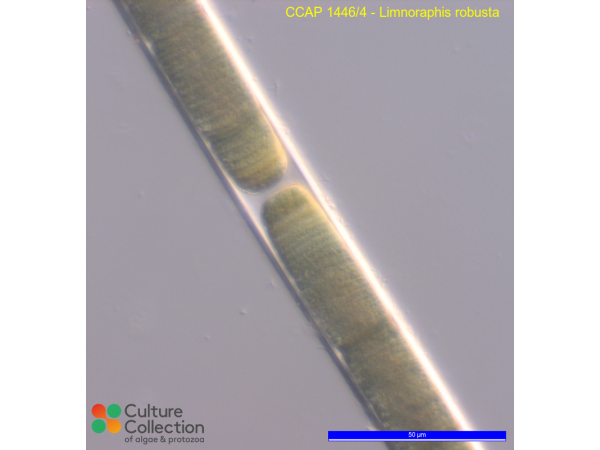References [ 24 ]
Barrios-Llerena ME, Burja AM & Wright PC (2007) Genetic analysis of polyketide synthase and peptide synthetase genes in cyanobacteria as a mining tool for secondary metabolites. Journal of Industrial Microbiology and Biotechnology 34: 443-456.
Reed RH, Richardson DL, Warr SRC & Stewart WDP (1984) Carbohydrate accumulation and osmotic stress in cyanobacteria. Journal of General Microbiology 130: 1-4.
DOI: none
Weldon DC & Mercer FV (1963) The ultrastructure of the vegetative cell of blue-green algae. Acta Botanica Neerlandica 16: 585-596.
DOI: none
Richert L, Golubic S, Le Guédès R, Hervé A & Payri C (2006) Cyanobacterial populations that build 'kopara' microbial mats in Rangiroa, Tuamotu Archipelago, French Polynesia. European Journal of Phycology 41(3): 259-279.
Ferreira D, Pinto F, Moradas-Ferreira P, Mendes MV & Tamagnini P (2009) Transcription profiles of hydrogenases related genes in the cyanobacterium Lyngbya majuscula CCAP 1446/4. BMC Microbiology 9: 67.
Ferreira D, Leitão E, Sjöholm J, Oliveira P, Lindblad P, Moradas-Ferreira P & Tamagnini P (2007) Transcription and regulation of the hydrogenase(s) accessory genes, hypFCDEAB, in the cyanobacterium Lyngbya majuscula CCAP 1446/4. Archives of Microbiology 188: 609-617.
Leitão E, Oxelfelt F, Oliveira P, Moradas-Ferreira P & Tamagnini P (2005) Analysis of the hupSL operon of the nonheterocystous cyanobacterium Lyngbya majuscula CCAP 1146/4: Regulation of transcription and expression under a light-dark regimen. Applied and Environmental Microbiology 71(8): 4567-4576.
Leitão E, Pereira S, Bondoso J, Ferreira D, Pinto F, Moradas-Ferreira P & Tamagnini P (2006) Genes involved in the maturation of hydrogenase(s) in the nonheterocystous cyanobacterium Lyngbya majuscula CCAP 1446/4. International Journal of Hydrogen Energy 31: 1469-1477.
Devine E, Holmqvist M, Stensjö K & Lindblad P (2009) Diversity and transcription of proteases involved in the maturation of hydrogenases in Nostoc punctiforme ATCC 29133 and Nostoc sp. strain PCC 7120. BMC Microbiology 9: 53.
Holmqvist M, Stensjö K, Oliveira P, Lindberg P & Lindblad P (2009) Characterization of the hupSL promoter activity in Nostoc punctiforme ATCC 29133. BMC Microbiology 9: 54.
Agervald A, Stensjö K, Holmqvist M & Lindblad P (2008) Transcription of the extended hyp-operon in Nostoc sp. strain PCC 7120. BMC Microbiology 8: 69.
Seabra R, Santos A, Pereira S, Moradas-Ferreira P & Tamagnini P (2009) Immunolocalization of the uptake hydrogenase in the marine cyanobacterium Lyngbya majuscula CCAP 1446/4 and two Nostoc strains. Fems Microbiology Letters 292: 57-62.
Maestre FT, Martín N, Díez B, López-Poma R, Santos F, Luque I & Cortina J (2006) Watering, fertilization, and slurry inoculation promote recovery of biological crust function in degraded soils. Microbial Ecology 52: 365-377.
DOI: none
Tiwari A & Pandey A (2012) Cyanobacterial hydrogen production - A step towards clean environment. International Journal of Hydrogen Energy 37: 139-150.
Guedes AC, Amaro HM, Barbosa CR, Pereira RD & Malcata FX (2011) Fatty acid composition of several wild microalgae and cyanobacteria, with a focus on eicosapentaenoic, docosahexaenoic and a-linolenic acids for eventual dietary uses. Food Research International 44: 2721-2729.
Charpy L, Palinska KA, Abed RMM, Langlade MJ & Golubic S (2012) Factors influencing microbial mat composition, distribution and dintrogen fixation in three western Indian Ocean coral reefs. European Journal of Phycology 47: 51-66.
Burja AM, Abou-Mansour E, Banaigs B, Payri C, Burgess JG & Wright PC (2002) Culture of the marine cyanobacterium, Lyngbya majuscula (Oscillatoriaceae), for bioprocess intensified production of cyclic and linear lipopeptides. Journal of Microbiological Methods 48: 207-219.
Barz M, Beimgraben C, Staller T, Germer F, Opitz F, Marquardt C, Schwarz C, Gutekunst K, Vanselow KH, Schmitz R, LaRoche J, Schulz R & Appel J (2010) Distribution analysis of hydrogenases in surface waters of marine and freshwater environments. PLoS ONE 5(11): e13846.
Oliveira P & Lindblad P (2008) An AbrB-like protein regulates the expression of the bidirectional hydrogenase in Synechocystis sp. strain PCC 6803. Journal of Bacteriology 190: 1011-1019.
Sherwood AR, Carlile AL, Vaccarino MA & Johansen JR (2015) Characterization of Hawaiian freshwater and terrestrial cyanobacteria reveals high diversity and numerous putative endemics. Phycological Research 63: 85-92.
Willis A, Parks M & Burford MA (2015) Draft genome assembly of filamentous brackish cyanobacterium Limnoraphis robusta strain CS-951. Genome Announcements 3: e00846-15.
Cannell RJP, Kellam SJ, Owsianka AM & Walker JM (1987) Microalgae and cyanobacteria as a source of glycosidase inhibitors. Journal of General Microbiology 133: 1701-1705.
Dzeha T, Nyiro C, Kardasopoulos D, Mburu D, Mwafaida J, Hall MJ & Burgess JG (2018) UV Resistance of bacteria from the Kenyan Marine cyanobacterium Moorea producens Microbiology Open -: e00697.
Curren E& Leong SCY (2019) Global phylogeography of toxic cyanobacteria Moorea producens reveals distinct genetic partitioning influenced by Proterozoic glacial cycles Harmful Algae 86: 10-19.

